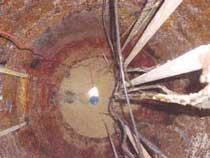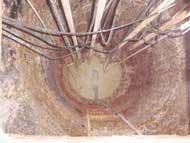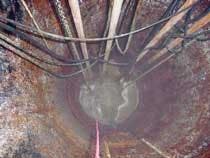Microbial Treatment Systems Attack FOG Problems
The Department of Public Works in Woodbridge Township, NJ, has found a solution to a growing problem of grease management. Like may other cities and towns across the country, fats, oil and grease (FOG) in lift stations and sewer lines have increasingly become a logistical and financial challenge for Woodbridge. But a new Microorganism Program and a city ordinance have reduced problems significantly.
As the fifth largest township in the state, Woodbridge has no shortage of restaurants, schools, sports complexes and other institutions producing hundreds of pounds of grease a day, all of which must make its way to the county and city wastewater treatment facilities. However, along the way grease can accumulate and harden in grease traps, lift stations and sewer lines causing clogs, water overflows and costly repair and removal.
"Prior to implementing the Microorganism Program, we were committing significant labor resources at overtime rates toward the repair of the wastewater system," said Joseph T. Kotowski, superintendent, Department of Waste Water, Woodbridge Township. "Between 15 and 20 percent of our annual budget was allocated for repairing and flushing lines that were backed up due to grease related problems."
In the early 1990s, Kotowski began experimenting with the use of microbial products that actually eat the grease that builds up in commercial drains and grease traps. The microbial products, which were already approved in an existing city ordinance, represented a completely different strategy for grease control. Traditional remedies included products containing enzymes and other grease liquefiers, which simply moved the grease and other organic matter build-up down the sewer line to eventually cause a larger clog elsewhere.
Success with the products led to an initiative that became known as the Microorganism Program. The program set out to enforce the existing ordinance that requires all commercial and public facilities to regularly use a microbial product for the purpose of grease reduction. The program also provides for a dedicated Microorganism Grease Trap Inspector to check grease and bacteria levels, ensuring that the ordinance is strictly followed.
"Over the past eight years we have cut our annual grease removed expenditures in half," Kotowski said, "and we've eliminated overtime labor costs from grease related problems."
At the University of Texas Health Science Center at San Antonio, Steve Mattingly, Ph.D., a professor of microbiology, has been involved in the development and testing of microbial products for wastewater treatment and other uses since 1996.
"The microbial products contain specifically isolated bacteria that eats the grease and converts it to carbon dioxide and water, in a process called bioremediation," Mattingly said. "These microbial 'grease eaters' bolster the existing, natural bacteria population already in the system to eliminate fats, oils, grease, starches and sugar."
If the restaurants and other FOG producing facilities don't strictly follow city ordinances regarding their grease traps, the problem moves to the lift station, where wastewater is routed and pushed to water treatment facilities.
San Antonio, TX, also recently began using a microbial product to attack its FOG problems.
The utility has approximately 156 lift stations moving wastewater to treatment facilities. When working as intended, the lift stations move the water at a flow rate of two feet per second, but grease build-up can slow the flow significantly, according to G. Leon Collins, Lift Station Maintenance Supervisor, Production Department, San Antonio Water System.
"Many of our stations have a decreased flow rate due to grease separation," Collins said, "and, that means that we have to go in with a vacuum truck and pump out the station."
To combat the problem, Collins has begun using a microbial product from BioStim, called the BioPlug, to reduce the grease build-up in his worst lift stations.
"We had tried using various grease emulsifiers, but they simply moved the grease down the line to cause a clog somewhere else," Collins said. "We have had great success with the BioPlug because it's a bacterial product designed to eliminate grease. It has not only significantly reduced the grease in lift stations, but allowed us to divert department resources from regular pumping to other activities."
Collins said the plan for the future is to attack the problem at both ends. This includes enforcing the codes and ordinances for restaurant grease traps while at the same time expanding the use of the BioPlug at lift stations.
While the use of bacteria is not a new concept, it does represent a shift in concept and practice for restaurants, other facilities and the municipalities that serve them.
"Greater utilization of bacteria in waste treatment and other bioremediation processes is the way of the future," Mattingly said. "It makes sense from a scientific standpoint, but perhaps more importantly, wastewater managers and municipalities are taking notice because using microbial products results in reduction of time and expense."
For more information on the Woodbridge ordinance please visit www.biostim.com or call 800-238-8812 for information.



